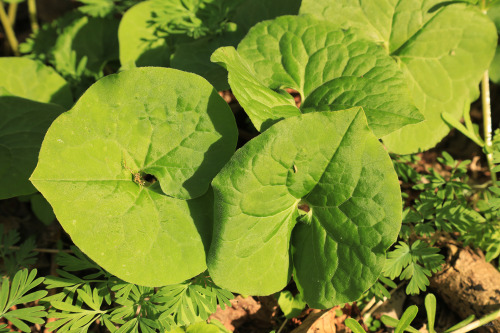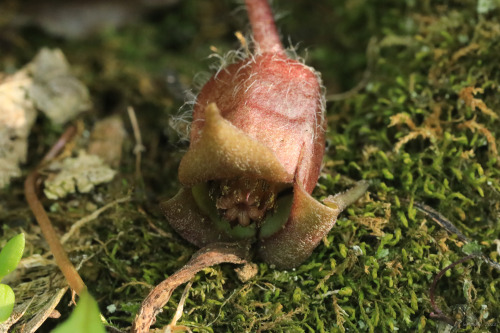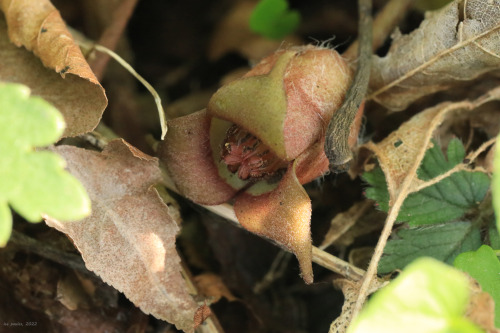Wild ginger (Asarum canadense) is an Appalachian native with a secret to tell. This unusual perennia
Wild ginger (Asarum canadense) is an Appalachian native with a secret to tell. This unusual perennial has more going for it than its attractive, heart-shaped leaves, which clump together in dense colonies in the understories of rich, mesic forests. In early spring, the plant produces a ground-hugging flower that mimics the look and odor of the rotting carcass of a dead animal. Newly-emerged gnats and flies in search of an easy meal are attracted to the hairy, morbid-looking blossom, which they enter and pollinate. But you’ll miss this amazing act of mimicry unless you get on your hands and knees and gently push back the plant’s softly-pubescent leaves to reveal the flowers underneath. As an aside, wild ginger isn’t closely related to real ginger (Zingiber officinale), although Native Americans and early settlers used its dried and powdered root as a spice. The practice is discouraged nowadays because the plant is known to contain poisonous compounds. Culinary attributes aside, it makes a lovely ground cover in native wildflower gardens. -- source link
Tumblr Blog : vandaliatraveler.tumblr.com
#appalachia#vandalia#west virginia#spring#wildflowers#asarum canadense#wild ginger#mimicry


